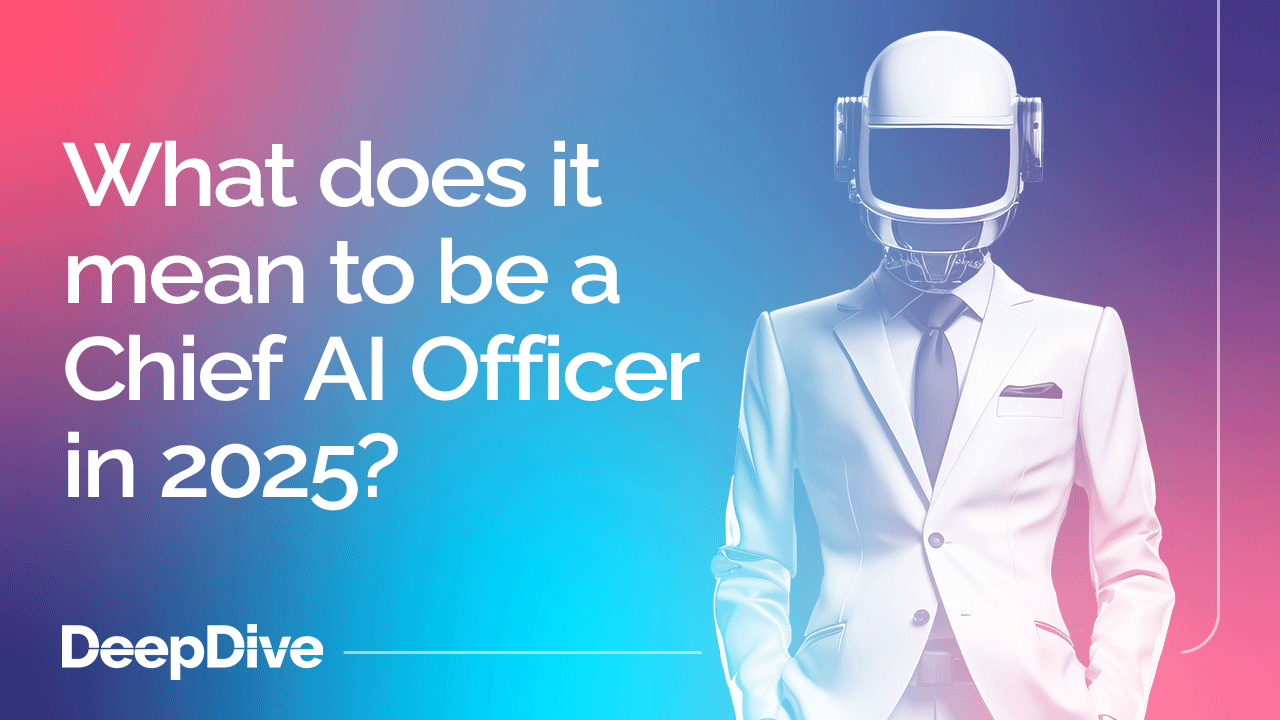

What does it mean to be a Chief AI Officer in 2025?

Welcome to the 7 new deep divers who joined us since last Wednesday.
If you haven’t already, subscribe and join our community in receiving weekly AI insights, updates and interviews with industry experts straight to your feed.
In February 2024, we asked Seth Dobrin (Co-Founder and CEO at Dobrin Ventures) why Chief AI Officers mattered.
Seth was IBM’s first ever Global Chief AI Officer (CIAO), with a track record for leading businesses through major periods of change; and he’s known as a global leader in AI.
A year (and a bit) later we’re looking at how the role of CAIOs has evolved. The transformation of the job reflects the rapid integration of AI into business strategies across industries; with the CAIO emerging from the shadows of traditional IT leadership to become a pivotal figure in senior management teams.
AI has become a strategic priority
This is the main driving force behind the increased importance of Chief AI Officers. Until recently, AI initiatives were mostly siloed inside IT departments. But this meant that efforts to develop AI use cases within companies were fragmented and ineffective.
Dobrin said:
“The Chief AI Officer role transcends traditional tech leadership. This position is a strategic cornerstone, integrating artificial intelligence into the heart of business operations and strategy.”
As AI has been adopted at pace, the CAIO has become a critical champion of a more holistic approach. It’s their job to make sure that AI is embedded across all facets of an organisation – and today, organisations recognise how important this is.
Senior management teams understand that AI projects need to be aligned with the broader objectives of an organisation. Because those projects can facilitate growth – they’re not just isolated, speculative tech experiments.
The Chief AI Officer has to push for cultural transformation
Beyond technological implementation, the CAIO now plays an invaluable role in creating an AI-ready culture. If organisations want to grow in an AI future, they need an environment that encourages innovation, supports ethical AI practices, and promotes enthusiasm for AI adoption at every level and in every department.
So the CAIO role is about people just as much as it’s about tech. Because if the people aren’t on board and ready to develop their AI skills, the organisation is likely to fall behind.
And take responsibility for ethical AI governance
We’re using AI more and more. And that usage must be ethical. This isn’t just a moral imperative; it’s also, increasingly, a legal requirement in countries around the world, as governments implement stringent compliance requirements for AI and data use.
The CAIO holds the task of establishing and maintaining governance frameworks that oversee data usage, model transparency, and algorithmic accountability.
They have to anticipate the risks of the organisation’s AI use and develop strategies to handle the ethical dilemmas involved in that use – and it’s their job to make sure all stakeholders can trust the AI models being deployed.
Developing AI talent
Organisations using AI need a robust, skilled pool of talent to draw on. It’s the CAIO in 2025 who’s primarily responsible for building that pool. They have to attract top AI talent to their team to manage increased AI use cases across an organisation.
And (linked to our point about cultural transformation) they have to upskill the existing workforce to make sure that everyone in the organisation can play their role in managing AI systems.
To underpin all of this, the CAIO needs to foster a culture of continuous learning. Because AI is changing and developing all the time; so people need to move with it.
The CAIO has to find ways to quantify the business impact of AI
“The Chief AI Officer is pivotal in adopting AI and harnessing its transformative potential across the organisation,” Dobrin noted.
AI projects require significant investment and support from senior stakeholders otherwise they’ll fall flat. And that support has to be ongoing – there’s no one-hit moment in which AI is established and then everything’s sorted.
So the CAIO has to demonstrate the tangible benefits of those AI projects to keep everyone on board. This means they’ve got to define clear objectives, establish relevant metrics, and calculate the ROI of AI projects.
Then they need to communicate those measurables clearly to stakeholders; telling a story that highlights the positive business impact of AI.
It’s not an easy role – but it’s critical for the future of AI in business
So, in short, being a CAIO is…a lot.
And as AI systems become more sophisticated, the role is going to become more complex – because it will have to encompass questions about the capabilities and potential sentience of AI, and the implications of that for the relationships between humans, tech, and business.
The role has changed significantly over just the last year. And that change will continue over the coming year, and the years beyond.
Organisations will continue to grapple with the complexities of AI adoption, so the CAIO’s influence will be instrumental in enabling a future where AI serves as a force for innovation and positive change.
Are you a CAIO?
We want to hear about your perspective on what this role really means in 2025.
Until next week.





